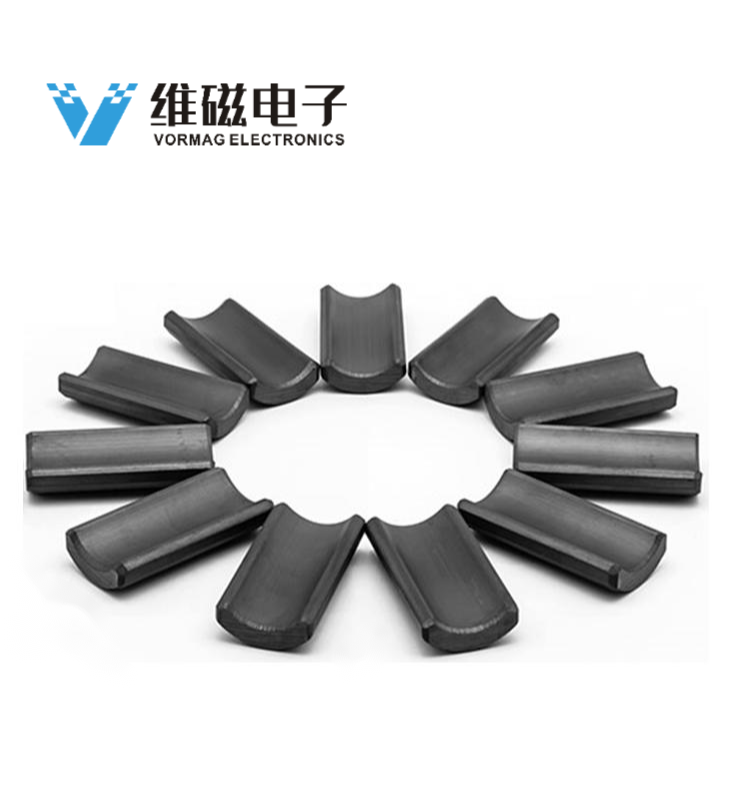The magnetic properties of ferrite magnet tiles show high permeability at high frequencies. Therefore, ferrite has become a non-metallic magnetic material with a wide range of applications in the field of high frequency and weak current. Because the magnetic energy stored in the unit volume of ferrite is low, the saturation magnetization is also low (usually only 1/3-1/5 of pure iron), which limits its use in the generation of high-frequency strong currents that require higher magnetic energy density and high-power applications. Wet-pressed ferrite magnet tiles / segment are the most important category of permanent ferrite products.
| hard ferrite magnets physical properties | |
| Orientation | Anisotropic |
| Composition | MO·6Fe2O3(M means Ba, Sr or their mixture) |
| Recoil relative permiability | 1.05-1.3 [μrec] |
| Density | 4.8-5.1 g/cm3 |
| Curie Temp. | 460-480°C |
| Thermal Conductivity | 5-10 W/m k |
| Poission's Ratio | 0.28 |
| Electric Resistivity | ≥10000 Ω·cm |
| Temp. Coeff. of Br | - 0.2 %/°C |
| Temp. Coeff. of Hcj | 0.2-0.5 %/°C |
| Vickers Hardness | 480-580Hv |
| Linear Expansion Coefficient | 7-15*10⁶/°C^(-1) |
| Specific Heat | 0.15-0.20 cal/g·ºC |
| Flexural Strength | 5-9 [kgf/mm2] |
| Compressive Strength | > 70 [kgf/mm2] |
| Tensile Strength | 0.2-0.5*108N/mm2 |
| Young's modulus | 120-180 kN/mm2 |
Permanent ferrite magnets are made of hard ferrites, which have a high coercivity and high remanence after magnetization. The high coercivity means the materials are very resistant to becoming demagnetized, an essential characteristic for a permanent magnet.
The magnetic properties of ferrite magnet tiles show high permeability at high frequencies.Therefore, ferrite has become a non-metallic magnetic material with a wide range of applications in the field of high frequency and weak current and have excellent practical properties that outperform metallic magnets and can be mass-produced at a high cost-performance ratio, perfectly suited for higher volume production runs.
Ferrite magnets are used in applications where magnets can be, or need to be relatively large and the cost needs to be as economic as possible. Permanent magnet materials can provide stable and long-lasting magnetic flux without consuming electric energy, which is one of the important means to save energy. Permanent magnet motors are typical high-efficiency, energy-saving and low-carbon industrial products, which are widely used in various industrial transmissions and rotating devices.

 Segments.png)

